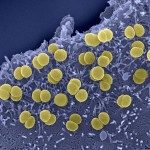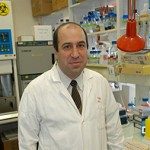Lien vers Pubmed [PMID] – 32316986
Lien DOI – 10.1186/s12916-020-01552-7
BMC Med 2020 Apr; 18(1): 109
The recent emergence of strains belonging to the meningococcal serogroup W (MenW) sequence type-11 clonal complex and descending from the South American sub-lineage (MenW:cc11/SA) has caused significant shifts in the epidemiology of meningococcal disease worldwide. Although MenW:cc11/SA is deemed highly transmissible and invasive, its epidemiological characteristics have not yet been quantified.We designed a mathematical model of MenW transmission, carriage, and infection to analyze the recent epidemiology of invasive disease caused by MenW:cc11/SA strains and by other MenW strains in England and in France. We confronted that model with age-stratified incidence data to estimate the transmissibility and the invasiveness of MenW:cc11/SA in England, using the data in France as a validation cohort.During the epidemiological years 2010/2011-2014/2015 in England, the transmissibility of MenW:cc11/SA relative to that of other MenW strains was estimated at 1.20 (95% confidence interval, 1.15 to 1.26). The relative invasiveness of MenW:cc11/SA was also found to exceed unity and to increase with age, with estimates ranging from 4.0 (1.6 to 9.7) in children aged 0-4 years to 20 (6 to 34) in adults aged ≥ 25 years. In France, the model calibrated in England correctly reproduced the early increase of MenW:cc11/SA disease during 2012/2013-2016/2017. Most recent surveillance data, however, indicated a decline in MenW:cc11/SA disease. In both countries, our results suggested that the transmission of MenW:cc11/SA carriage possibly started several months before the first reported case of MenW:cc11/SA disease.Our results confirm earlier suggestions about the transmission and the pathogenic potential of MenW:cc11/SA. The main limitation of our study was the lack of age-specific MenW carriage data to confront our model predictions with. Furthermore, the lesser model fit to the most recent data in France suggests that the predictive accuracy of our model might be limited to 5-6 years.Our study provides the first estimates of the transmissibility and of the invasiveness of MenW:cc11/SA. Such estimates may be useful to anticipate changes in the epidemiology of MenW and to adapt vaccination strategies. Our results also point to silent, prolonged transmission of MenW:cc11/SA carriage, with potentially important implications for epidemic preparedness.



